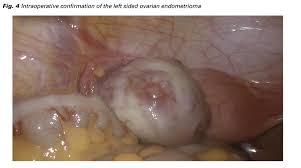Uterine fibroid embolization (UFE) is a minimally invasive medical procedure that helps manage uterine fibroids. Fibroids are noncancerous growths in the uterus that often cause symptoms like heavy bleeding, pain, and pressure. For those looking for a treatment option that doesn’t involve major surgery, UFE offers a promising alternative. Here’s what patients can expect before, during, and after undergoing the procedure:
Uterine Fibroid Embolization Process
UFE is a procedure designed to shrink fibroids by blocking blood flow to them. A small catheter is inserted into a blood vessel, usually near the groin or wrist, and a specialized material is used to block the arteries supplying the fibroids. By cutting off the fibroids’ blood supply, they shrink over time, leading to a reduction in symptoms. This approach is minimally invasive, which means no large incisions and, typically, a shorter recovery period compared to traditional surgery.
What to Expect During the Procedure
The procedure generally takes about 1 to 2 hours and is performed by an interventional radiologist. Patients are given mild sedation to help them relax, but they remain awake throughout the process. A small puncture site is created, often near the groin or wrist, for catheter insertion.
This step is relatively painless due to the local anesthetic applied beforehand. The catheter is carefully guided to the blood vessels supplying the fibroids, and the embolization material is released to block the blood flow. After the procedure, the catheter is removed, and a bandage is applied to the puncture site.
Recovery After UFE
Most patients begin to notice an improvement in their symptoms within a few weeks. Heavier menstrual bleeding usually decreases, and feelings of pelvic pain or pressure lessen significantly over time. It’s common to experience cramping similar to menstrual cramps following the procedure. This is a normal part of the recovery process as the fibroids begin to shrink. Over-the-counter or prescribed pain medication is typically recommended to help manage this discomfort.
Many individuals stay overnight in the hospital for monitoring, but some return home the same day, depending on the healthcare provider’s recommendation. The brief hospitalization ensures that any immediate post-procedure concerns, such as pain or nausea, are well-managed.
Activity Restrictions
After uterine fibroid embolization, rest and gradual return to routine activities are recommended. Patients are generally advised to avoid heavy lifting or strenuous activities for at least a week. This helps protect the puncture site and supports overall healing. Light activities, like walking, are encouraged as they promote circulation and help speed up recovery.
When to Contact Your Doctor
While most individuals recover without complications, there are instances when medical advice should be sought. Contact your doctor if you notice signs of infection, such as fever, redness at the puncture site, or increased pain that doesn’t subside. Follow-up visits are typically scheduled to monitor progress and ensure everything is healing as expected.
Find an Embolization Center Near You
Uterine fibroid embolization offers a safe and effective way to treat fibroids without invasive surgery. Through this minimally invasive approach, patients experience relief from symptoms and a quicker recovery compared to surgical options. With proper preparation, realistic expectations, and guidance from your healthcare team, UFE provides an opportunity to improve the quality of life for those dealing with fibroids. If you’re exploring UFE, find a medical provider to make informed decisions that suit your unique needs.
- mylovelyfurryfriend discover expert tips on dog health
- Infectious Diseases Updates – Stay Informed, Stay Protected!
- Wegovy For Weight Loss – A Breakthrough in Managing Obesity!
- Emergency Medicine Forum – A Hub for Fast-Paced Knowledge, Support & Updates!
- Pediatrics Discussions – Insights, Challenges, and Expert Advice for Better Child Health!





Leave a Reply